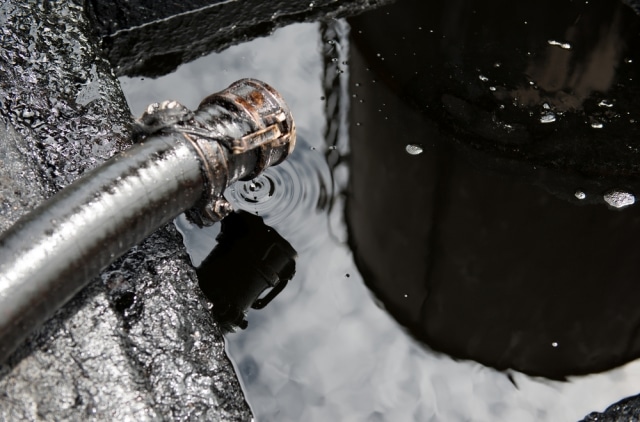How much water does California’s oil and gas industry actually use? We still don’t know, despite a 2014 law signed by Governor Jerry Brown that went into effect this year requiring companies to report on all water produced, used and disposed of by oilfield operations.
Oil and gas regulators with California’s Division of Oil, Gas and Geothermal Resources (DOGGR) missed the first reporting deadline, April 30, claiming they had simply received too much data to process in time. But now we know there was probably another reason: hundreds of companies had flat out refused to obey the law.
In fact, more than 100 companies still refuse to comply with the water reporting requirements altogether.
DOGGR extended the filing date for the first quarter of 2015 to June 1, and has now, at long last, released the first report on oilfield water usage and disposal — though more than 100 companies still haven’t submitted any data to the state despite the extension.
According to the report, just 166 oilfield operators filed their quarterly water report by June 1, prompting DOGGR to issue 289 Notices of Violation to companies that failed to meet the extended deadline. Some 146 companies complied with the violation notices and did submit their water usage data, but 104 operators remain out of compliance and at risk of civil penalties.
No fines or other penalties have been levied against noncompliant companies so far.
DOGGR says the data it did receive, and on which the report is based, represents “approximately 59 percent of the produced water, and 41 percent of the injected water during the first quarter.” The agency did not verify the accuracy of the data self-reported by oilfield operators.
California’s oil and gas regulators are still dealing with the fallout from revelations made over the past year that some 2,500 oil industry injection wells were improperly permitted to operate in groundwater aquifers that should be protected under the Safe Drinking Water Act. Nonetheless, some 13 billion gallons of oil wastewater was pumped into injection wells over the three months covered by the report, while another 10 million gallons was discharged into surface waterways.
DOGGR has also allowed oilfield wastewater to be stored in open, unlined pits — some with expired permits, some with no permits whatsoever — that have been shown to leach contaminants into surrounding land and groundwater. According to the report, oil companies dumped an average of 75 million gallons of oil wastewater a month into these open storage pits in the first quarter of 2015.
California, in the grip of a historic drought, is attempting to rein in water use, but without good data on water usage, experts have told DeSmog, it’s virtually impossible for the state to adequately plan conservation measures.
Another cause for concern is that hundreds of thousands of barrels of oil field wastewater are sold to California farmers every day, making it that much more urgent that regulators understand exactly how oilfield operators are treating that produced water and what chemicals might lurk in it.
Environmentalists were quick to call on Governor Jerry Brown to rein in the scofflaw companies in response to the report.
“The oil industry is so desperate to hide its toxic threat to California’s water that companies are flouting a simple reporting law,” Hollin Kretzmann of the Center for Biological Diversity said in a statement. “This woefully incomplete report still paints a disturbing picture of billions of gallons of oil waste fluid being dumped into waterways, aquifers and unlined pits.”
Image Credit: Anan Kaewkhammul / Shutterstock.com
Subscribe to our newsletter
Stay up to date with DeSmog news and alerts







